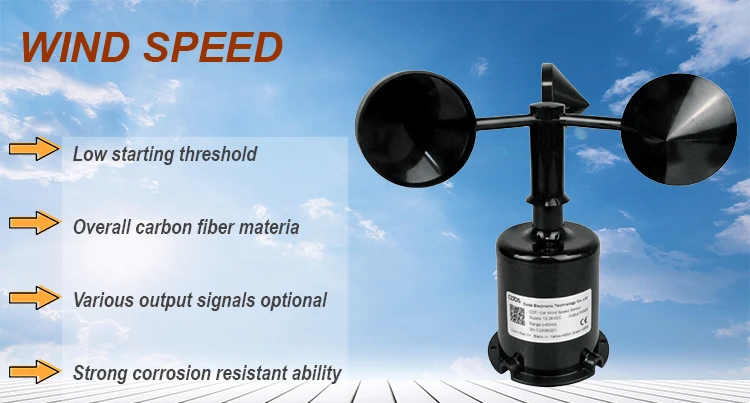
# Wind Speed Measuring Instruments: Types and Applications
## Introduction
Wind speed measurement is crucial in various fields, from meteorology to renewable energy. Understanding wind patterns helps in weather forecasting, aviation safety, and optimizing wind turbine performance. This article explores different types of wind speed measuring instruments and their applications.
## Types of Wind Speed Measuring Instruments
### 1. Anemometers
Anemometers are the most common instruments for measuring wind speed. They come in several varieties:
– Cup Anemometers: Feature three or four cups mounted on horizontal arms that rotate with the wind
– Vane Anemometers: Combine a propeller with a tail to measure both speed and direction
– Hot-wire Anemometers: Use electrically heated wires where cooling by wind indicates speed
– Sonic Anemometers: Measure wind speed by detecting how sound waves are affected by moving air
### 2. Wind Vanes
While primarily used for measuring wind direction, some advanced wind vanes can also estimate wind speed based on the pressure difference created by the vane’s movement.
### 3. Pitot Tubes
Common in aviation, Pitot tubes measure airspeed by comparing static and dynamic air pressure. They’re highly accurate but require proper alignment with wind direction.
### 4. Lidar (Light Detection and Ranging) Systems
These advanced systems use laser technology to measure wind speed at various altitudes without physical contact with the air flow.
## Applications of Wind Speed Instruments
### Meteorological Monitoring
Weather stations worldwide use anemometers to collect data for weather forecasting and climate studies. Accurate wind speed measurements help predict storms and other severe weather events.
### Aviation Industry
Airports rely on wind speed measurements for safe takeoffs and landings. Pilots use this information to adjust their flight paths and speeds accordingly.
### Wind Energy Sector
Wind farms use sophisticated anemometry to:
– Assess potential sites for turbine placement
– Optimize turbine performance
– Monitor operational conditions
– Predict power output
### Building and Construction
Engineers measure wind loads on structures during both design and construction phases to ensure buildings can withstand local wind conditions.
### Environmental Studies
Researchers use wind speed data to study:
– Air pollution dispersion
– Microclimate patterns
– Erosion processes
– Wildlife migration patterns
## Choosing the Right Instrument
When selecting a wind speed measuring device, consider:
– Required accuracy level
– Measurement range
– Environmental conditions
– Data recording needs
– Budget constraints
– Maintenance requirements
For most general purposes, cup or vane anemometers provide sufficient accuracy. For research or industrial applications, more sophisticated instruments like sonic anemometers or Lidar systems may be necessary.
## Maintenance and Calibration
Regular maintenance ensures accurate measurements:
– Clean sensors to prevent debris buildup
– Check for physical damage
– Verify alignment (for directional instruments)
– Calibrate according to manufacturer specifications
– Replace worn components promptly
## Future Developments
Emerging technologies in wind measurement include:
– Miniaturized sensors for portable applications
– AI-powered data analysis
– Integrated systems combining multiple measurement techniques
– Improved remote sensing capabilities
– Enhanced durability for harsh environments
## Conclusion
Wind speed measuring instruments play a vital role in numerous industries and scientific fields. From simple mechanical anemometers to advanced laser-based systems, these devices help us understand and harness wind energy while protecting against its potential dangers. As technology advances, we can expect even more precise and versatile wind measurement solutions to emerge.
Keyword: measure wind speed instrument
Comments are closed